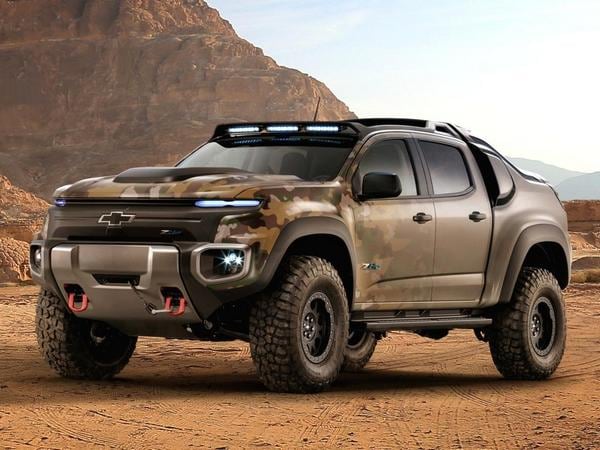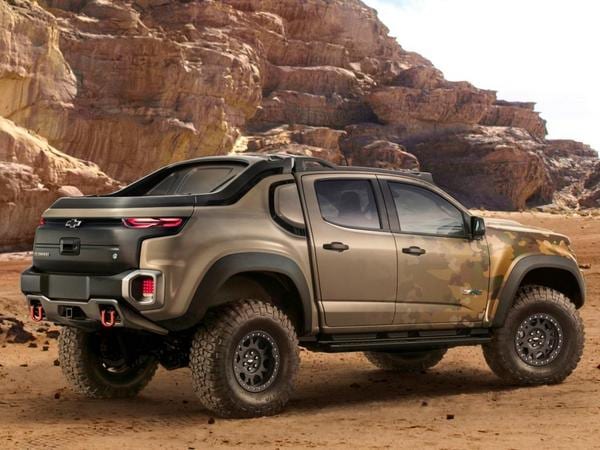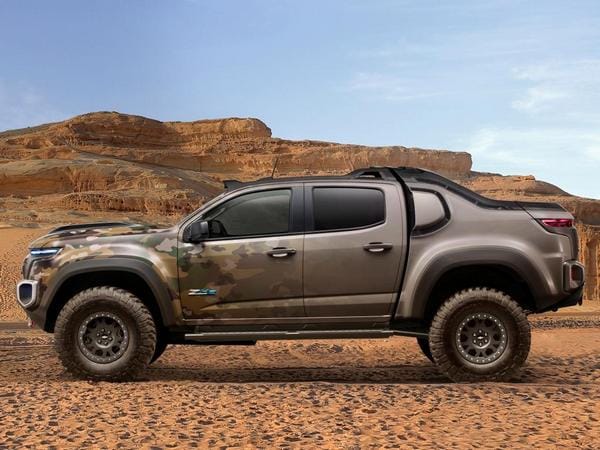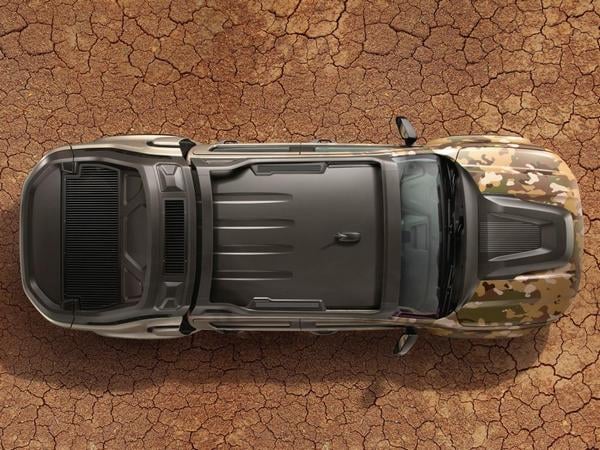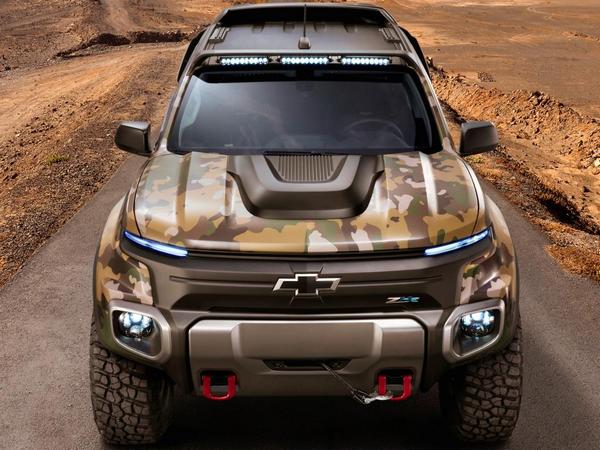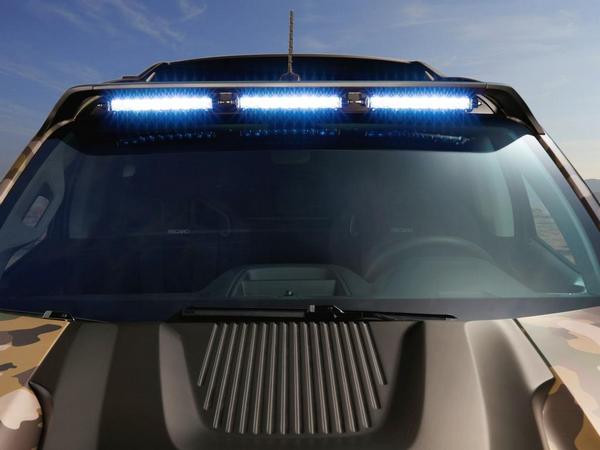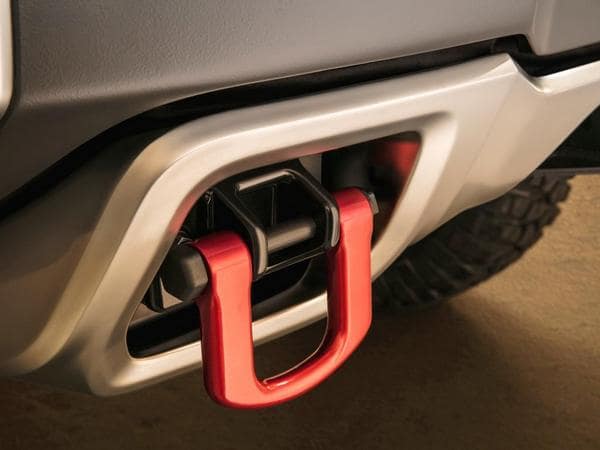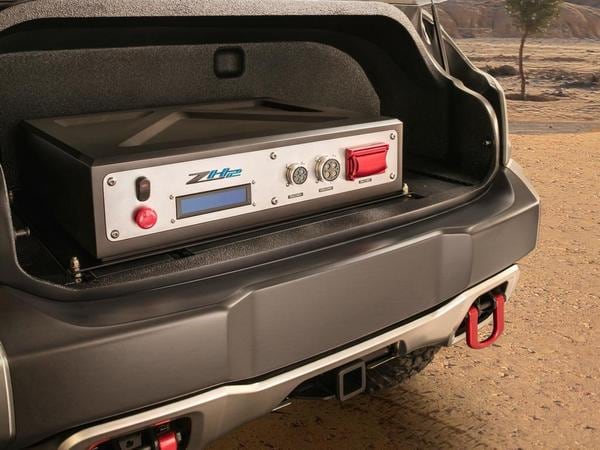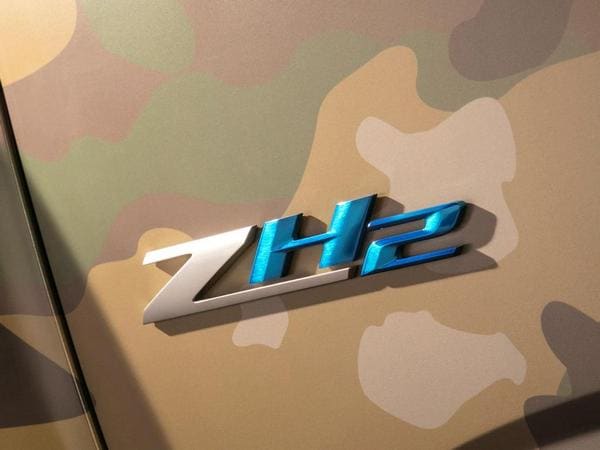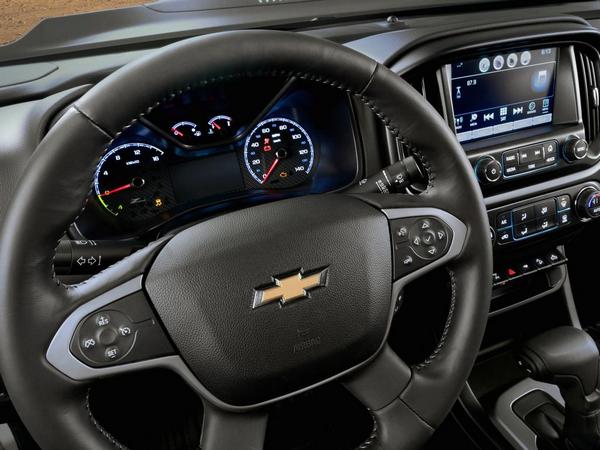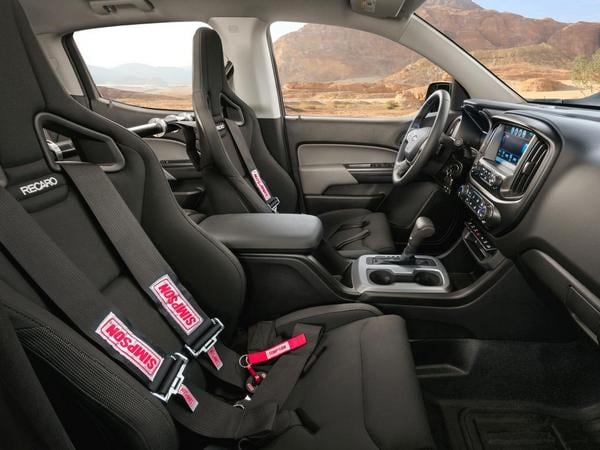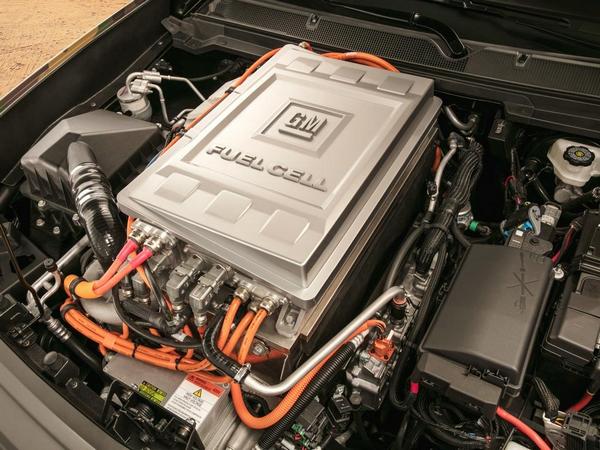Fuel cell propulsion on future battlefields? Since 1986 the U.S. military has operated with a “one fuel” battlefield strategy—every vehicle in a combat theater running on the same fuel.
That one fuel is JP8, a diesel fuel similar that used in jet engines (JP-Jet Propellant). But General Motors seeks to add a fuel cell asterisk to this long-standing policy with the addition of fuel cell power, noting that hydrogen, the basic ingredient in fuel cell electrical generation, can be collected from a variety of sources, including diesel fuel.
The agent of this change is a Chevy Colorado pickup, militarized in Army camo paint with off-road suspension, 11.8 inches of ground clearance, and 37-inch knobby tires on bead-lock wheels. Beneath the hood is a GM fuel cell providing electricity to a big synchronous AC motor sending thrust to all four wheels.
Developed in collaboration with the Army’s Tank Automotive Research, Development, and Engineering Center (TARDEC), the ZH2 project went from concept to completion in less than a year, and was unveiled at this autumn’s Association of the U.S. Army (AUSA) exposition in Washington, D.C., a military hardware trade show featuring everything from small arms to tanks.
The fuel cell stack employed in the ZH2 project vehicle is not the latest iteration of GM’s ongoing research and development in this area, which dates back a half-century. Although newer ones are more compact and presumably more efficient, GM has logged millions of public road miles with the system employed in the ZH2, and confidence in its reliability is high.
One-of-a-kind Colorado
The ZH2 is obviously not your everyday Chevy Colorado. At 133.5 inches, its wheelbase falls between standard and long-wheelbase civilian Colorados. As noted, its ground clearance is extra high, approach and departure angles (48 and 39 degrees, respectively) are well suited to rugged terrain, and there’s no shortage of ground-hugging mass—6038 pounds, about 1200 pounds heavier than a regular Colorado diesel 4×4.
Electricity from the fuel cell stack feeds an AC synchronous motor with 236 lb-ft of torque that’s capable of propelling the truck to 60 mph in 15.4 seconds, according to GM. That’s just one mph short of the vehicle’s top speed. Max range is currently pegged at 143 miles, although GM is targeting 350 to 400 miles.
Inside, a hefty steel tube spans the cab just behind the front seats, serving as an anchor for the racing-style seat belts, and a set of four Recaros replace the standard seats. The modifications don’t extend to the dashboard, instrumentation, and infotainments, which is stock Chevy Colorado.
Stealth Factor
While the ZH2’s current range and performance stats aren’t exactly compelling, there are other attributes the Army finds interesting. Tops on the list: quiet operation. No diesel noise to announce the vehicle’s approach.
Other attractive traits: electric motors deliver substantial torque at very low rpm, the fuel cell stack has a low thermal signature (as distinct from an internal combustion engine), fuel cells are environmentally friendly, the system’s by-product is water (a plus in desert combat theaters), and the system can be used as an auxiliary power source.
GM will continue development of the ZH2 mule until April of 2017, before handing it over to the Army for a one-year test to be conducted at three posts—Fort Carson, Colorado; Fort Benning, Georgia; and Fort Bragg, North Carolina.
